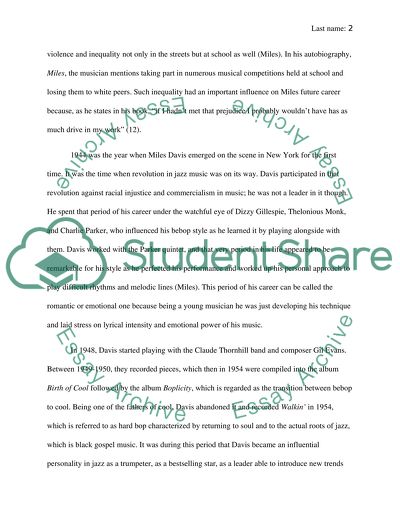Cite this document
(“MIles Davis Essay Example | Topics and Well Written Essays - 1250 words”, n.d.)
Retrieved from https://studentshare.org/music/1665523-miles-davis
Retrieved from https://studentshare.org/music/1665523-miles-davis
(MIles Davis Essay Example | Topics and Well Written Essays - 1250 Words)
https://studentshare.org/music/1665523-miles-davis.
https://studentshare.org/music/1665523-miles-davis.
“MIles Davis Essay Example | Topics and Well Written Essays - 1250 Words”, n.d. https://studentshare.org/music/1665523-miles-davis.


